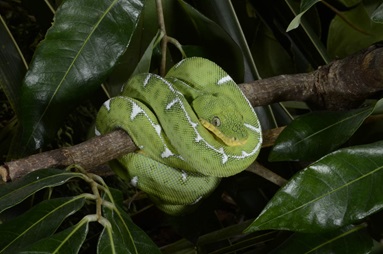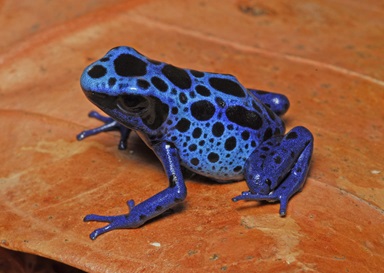Buying A Healthy Pet Reptile or Amphibian: Practical Advice
Before you start reptile shopping it’s important to know what you’re looking for. For many first time reptile or amphibian owners it can be hard to tell if you’re picking out a healthy animal. Before you buy a reptile or amphibian, be sure to look for the following things.
General Advice On Finding A Healthy Reptile:
- Depending on the species, the animal should generally seem active, alert and aware. If the animal appears to be lethargic or listless that could be a sign of trouble.
- Make sure the animal is not overweight or underweight.
- Get as much information on the animal’s history as you can from the source you’re buying from, like age, eating habits and veterinary history.
- Check the animal’s eyes and eyelids. If the eyes appear cloudy, hazy or swollen it is likely have health issues.
- Be aware of any foul odors. Animals and their terrariums will almost always have some scent, just be sure there is nothing overwhelming coming from your potential new pet.
- Carefully examine the skin of animal you are looking to purchase. Look out for cuts, scrapes, sores, tumors, irritations, external parasites such as mites, and in the case of aquatic animals, fungal lesions or infections.
- Watch how they breathe. Often times open mouthed breathing may indicate respiratory problems, especially with snakes.
- It should be noted that bearded dragons often bask with their mouths open. This is called gaping and is not a problem. This behavior allows bearded dragons to dissipate any extra body heat.
- Observe their movement. Make sure they aren’t shaking or unable to move a limb. If they are a species that like to climb, make sure they can move easily and aren’t falling.
- Check their nostrils and make sure there isn’t any mucus or discharge.
- If an animal is in the process of undergoing veterinary care or treatment for problems listed above or below, a reputable store or breeder should be able to provide veterinary records.
- Make sure to have a knowledgeable veterinarian available to ask questions to or see your new pet in case of any issue. To find a vet near you, visit the Association of Reptilian and Amphibian Veterinarians website’s “Find a Vet” HERE.

How To Select A Healthy Snake
- Is the snake you’re looking at flicking their tongue? That’s a good sign! That means it is sensing its environment and is alert.
- Watch for open mouthed breathing, as this could be a sign of respiratory problems.
- Listen for audible clicking or wheezing as that could be a sign of an upper respiratory infection.
- Check for external parasites such as mites or ticks.
How To Select A Healthy Lizard
- Is the lizard you’re looking at flicking its tongue? As with snakes, that’s a good sign!
- If you’re looking at monitors, tegus, iguanas or similar lizards be sure their claws or nails are not overgrown. This is often a sign of a nutritional deficiencies.
- Many lizards use their tail as a way to store fat. If you’re looking at a lizard that does this, make sure their tail is fat and healthy -- thin tails could be a sign of trouble.
- Keep in mind that if a lizard has shed its tail recently it will regrow shorter and appear a little discolored. This smaller regenerating tail is not a sign of trouble.
How To Select A Healthy Turtle or Tortoise
- Look for discoloration on the shell. Should you notice any black, white, red or brown spots, patches, or lines, is could be a sign of shell rot or a similar bacterial or fungal infection.
- If you notice algal growth on the shell of your turtle there is no need to be alarmed. This is natural and will not harm the turtle, feel free to go ahead and clean it off.
- While inspecting the shell, look out for softened, sloughing, concave or convex areas.
- A turtle’s beak and claws should not be overgrown. Overgrown claws can indicate poor diets or nutritional deficiencies.
- It should be noted that many male aquatic and semi aquatic turtles naturally have longer claws than the females. This size difference should not be interpreted as a poor health factor.

How To Select A Healthy Amphibian (Frogs, Toads, Newts, Salamanders)
- Is the amphibian behaving erratically or spastically? Depending on the species this may indicate poor living conditions or toxic infections.
- Look for physical deformities. If the amphibian seems bloated, thin or bony that pet is not well.
- Species that have permeable skin, such as frogs and salamanders, should appear wet and smooth.
Buying Reptiles Online
Before you buy a reptile online, there are a few things to keep in mind:- Only buy from reputable sources. Research the person or company you’re buying from.
- Understand there is always a risk that the animal may not look like the photos you’ve seen, and there is the possibility that the animal can get sick and even die during shipping.
It is always recommended that you purchase reptiles and amphibians locally and in person. This way, you can be sure your new pet is in good health and will be able to live a long and happy life as a part of your family.
To stay in-the-know, visit our articles, FAQs, and subscribe to our Zilla Zooletter to get all the latest information on reptile care and new products. We love hearing from you! If there is more you’d like to learn about or if you’re looking to be involved in our reptile-loving community, find us on Facebook.
